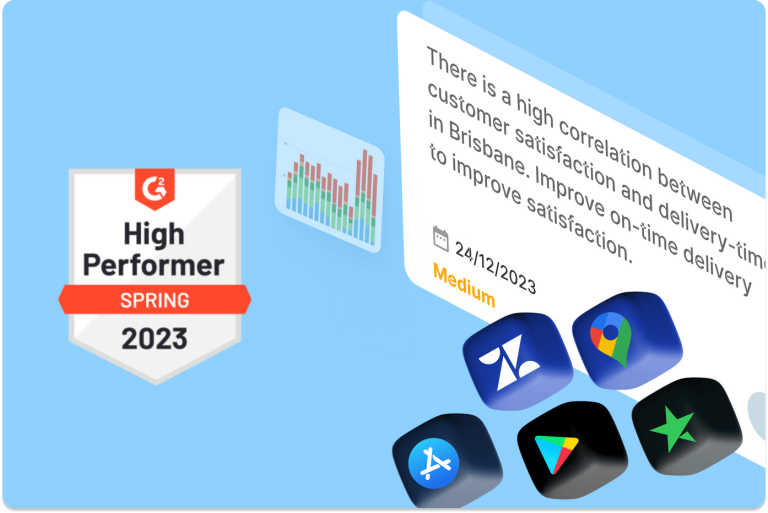
What is Customer Churn? The Basics
What is Customer Churn? Why it’s crucial for your business, and how to calculate and reduce it. Gain valuable insights and practical strategies to enhance customer retention and boost your business’s success.

In the ever-evolving landscape of franchise businesses, the importance of customer experience cannot be overstated. Each franchise location, operating under a common brand, is expected to deliver a consistent and exceptional customer experience. However, as franchise groups expand, managing the customer experience across multiple units can become a complex puzzle with unique challenges. In this article, we will delve into the multifaceted world of multi-unit franchise management, exploring the challenges, offering solutions, and providing real-world examples supported by facts, figures, and data.
Multi-unit franchising has witnessed significant growth in recent years. According to the International Franchise Association (IFA), more than 50% of all franchised units in the United States are operated by multi-unit franchisees. This shift in the industry’s landscape has brought forth an array of challenges associated with customer experience.
Maintaining consistent customer experiences across multiple franchise locations is one of the foremost challenges faced by franchise groups. Each unit must adhere to the brand’s service standards, but variations in service quality can emerge due to differences in management, employee training, and local market dynamics.
Solution: Implement standardized training programs, clear operational guidelines, and regular quality audits to ensure uniformity in customer experience. Companies like McDonald’s excel in this aspect, maintaining consistent taste, quality, and service standards worldwide.
Forget about reading through thousands of voice of customer data points.
Let our AI-powered ‘Insight Assistant’ flag the issues that matter so you can work faster, boost productivity, and save more time.
Franchisees often face a dilemma: adapting to local customer preferences and demographics while ensuring brand consistency. Striking the right balance between customization and adherence to the brand’s core values can be tricky.
Solution: Encourage franchisees to participate in decision-making processes, considering local insights, and preferences while adhering to non-negotiable brand guidelines. Starbucks, for instance, offers region-specific coffee blends while maintaining its brand integrity.
High employee turnover is a common issue in the retail and fast-food sectors, making it challenging to maintain a skilled and motivated workforce capable of delivering excellent customer service.
Solution: Regular, comprehensive training and development programs, along with attractive incentive schemes, can help reduce turnover and ensure employees are well-equipped to serve customers. Domino’s Pizza is an example of a company that invests significantly in employee training and development.
Efficiently integrating technology, such as POS systems, customer relationship management (CRM) software, and mobile apps, can be a daunting task. Disparate systems across franchise units can lead to inconsistent customer experiences.
Solution: Invest in centralized technology solutions that streamline operations and data collection, ensuring a unified customer experience. The Subway franchise, for instance, successfully introduced a mobile app for online ordering and loyalty programs across its franchise network.
Gathering and managing customer feedback from various locations can be overwhelming. Disparate feedback systems might lead to unaddressed issues and missed opportunities for improvement.
Solution: Implement a centralized feedback collection and analysis system to collate insights from all locations. Brands like Hilton Hotels employ sophisticated CRM systems to gather guest feedback, allowing for swift issue resolution and continuous improvement.
Explore Eclipse AI Platform Features
To illustrate how franchise groups have navigated these challenges, let’s explore a few real-world examples:
McDonald’s, with over 38,000 locations worldwide, is the epitome of consistency. The fast-food giant maintains uniformity by enforcing strict operational standards. They provide comprehensive training to their employees, ensuring everyone knows the exact specifications for cooking and serving each menu item. Furthermore, they employ technology solutions, such as digital kiosks and mobile ordering, to enhance the customer experience.
McDonald’s also manages local adaptation by offering regional-specific menu items. For instance, in India, they offer a range of vegetarian options, which resonate with the local culture and dietary preferences while adhering to their global brand identity.
Starbucks embraces the challenge of balancing brand consistency with local adaptation. While Starbucks provides a standardized core menu globally, they incorporate regional preferences by offering location-specific beverages and food items. Their success lies in empowering local store managers to make decisions based on their understanding of the local market, within the parameters of the Starbucks brand.
Starbucks also leverages technology, like their mobile app, for customer convenience and loyalty programs, which enhances the overall customer experience across their multi-unit franchise network.
Domino’s Pizza addresses the issue of employee training and turnover through comprehensive training programs and incentives. They invest in ongoing training and development to improve service quality and keep employees motivated. Incentive programs, including bonuses and recognition, are used to reduce turnover and retain skilled staff.
Domino’s also excels in technology integration, with efficient online ordering systems and a prominent focus on data analytics to understand customer preferences. This tech-savvy approach has contributed to their success in delivering consistent customer experiences.
Subway, with its vast franchise network, tackled the technology integration challenge by introducing a unified mobile app for online ordering and loyalty programs. This app streamlines the ordering process, provides a personalized experience, and collects valuable customer data, allowing Subway to enhance its services and offerings.
A well-executed strategy to navigate customer experience challenges in multi-unit franchise management can yield significant benefits. Here are a few notable impacts:
Consistency, personalization, and convenience lead to improved customer satisfaction and loyalty. Franchise groups that effectively address these challenges often see higher customer retention rates.
Enhanced customer experiences typically result in higher sales and revenue. Satisfied customers are more likely to return and recommend the brand to others.
A well-managed franchise network with consistent customer experiences contributes to a strong and positive brand reputation. This can attract more franchisees and customers.
Franchisees benefit from comprehensive support and training, resulting in more profitable businesses and increased investment in additional units.
Let’s look at some data and figures that underline the importance of addressing customer experience challenges in multi-unit franchise management:
According to a study by Temkin Group, loyal customers are five times more likely to purchase again and four times more likely to refer the company to others. Addressing customer experience challenges can significantly impact customer loyalty.
A study by Adobe found that companies with strong customer experience management programs achieve significantly higher year-over-year revenue growth compared to those without such programs. The revenue growth for these companies was 10% higher on average.
A study by Nielsen found that 92% of consumers trust recommendations from friends and family over other forms of advertising. A strong brand reputation built on excellent customer experiences can lead to organic growth through word-of-mouth referrals.
Data from the Franchise Business Review shows that franchisees who receive robust training and support are more likely to be satisfied with their franchise opportunity. Satisfied franchisees tend to expand their operations and open additional units.
Multi-unit franchise management presents numerous challenges when it comes to ensuring a consistent and exceptional customer experience across a wide network of locations. However, with the right strategies and solutions, these challenges can be navigated successfully. Brands like McDonald’s, Starbucks, Domino’s Pizza, and Subway have showcased effective methods to address these challenges, resulting in increased customer loyalty, revenue growth, stronger brand reputation, and franchisee success.
The data and figures underscore the significant impact that an investment in customer experience can have on a franchise business’s success. As the multi-unit franchise landscape continues to evolve, mastering customer experience management will remain a critical factor in achieving sustained growth and profitability.
Want The Latest CX Intelligence?
Analyse all your voice of customer data in one place and empower your teams with actionable insights that help them understand the true voice of your customers.
✔Free forever ✔ No credit card needed ✔ Reduce Churn


What is Customer Churn? Why it’s crucial for your business, and how to calculate and reduce it. Gain valuable insights and practical strategies to enhance customer retention and boost your business’s success.

In the ever-evolving landscape of customer-centric business, staying ahead of the curve is essential for success.

Explore the fundamentals of customer retention with actionable strategies to keep your clients coming back.
Don’t Let Your Competitors Understand Your Customers Better Than You
Don’t miss out. Try our 30-day Free Professional Trial.
